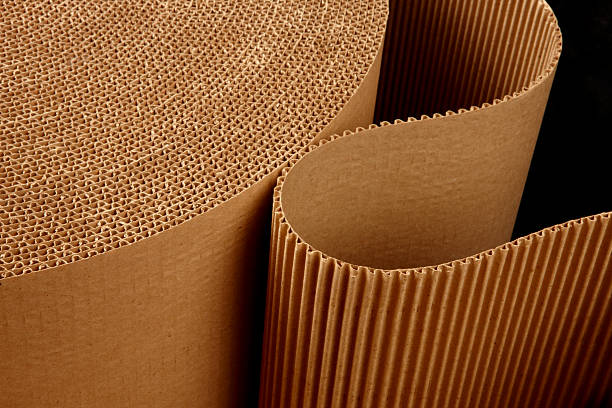Corrugated 101: What You Need to Know
More and more companies are returning to corrugated (sometimes referred to as ‘cardboard’) as their go-to solution for their packaging needs. This is due to corrugated’s unique blend of adaptability, durability, cost-effectiveness, and eco-friendliness.
The word ‘cardboard’ might bring images of heavy-duty cardstock, cereal boxes, and poster boxes to mind. However, in our industry, we prefer to use the term ‘corrugated fiberboard’ to precisely refer to our packaging material.
What Is Corrugated Fiberboard?
Corrugated fiberboard is created with at least one sheet of dense paperboard and one corrugated (rippled) sheet. This layered design ensures that the packaging can stand up to the rigors of shipping and storage, making it an industry favorite.
The actual process of creating corrugated fiberboard is more elaborate than it might sound. An exterior layer of paperboard is fused with an interior corrugated layer. This inner layer is shaped using state-of-the-art machines, called corrugators, that mostly use 100% recycled paper with the flexibility to ripple easily. Also known as the medium, the inner layer gets its recognizable rippled texture from a combination of heat, moisture, and a rolling process. Finally, it is bonded to the paperboard sides with an environmentally-friendly, starch-based adhesive to create the final product.
What Are The Different Types of Corrugated Cardboard?
One of the main reasons that companies love using corrugated cardboard is because of its versatile nature. The main types include:
- Single face corrugated fiberboard: This type includes one layer each of paperboard and corrugated board, often acting as a secondary protective layer for already packaged goods.
- Single wall or double face: This is the most common type of corrugated fiberboard, consisting of two layers of paperboard with an inner corrugated layer. The thickness can vary from 1/16th to 3/16th of an inch.
- Double wall: A more robust type of corrugated fiberboard, this features two layers of corrugated paper and three layers of paperboard. It is often the preferred choice for industrial shipping and the transportation of fragile materials.
- Triple wall: This consists of three layers of corrugated paper and four layers of paperboard. This durable type is often used as a replacement for wooden crates, especially when shipping sensitive chemicals or industrial machinery.
Elevate Your Packaging Solutions
At Lawrence Paper Company, we're committed to staying at the forefront of industrial and retail packaging trends. With our extensive range of services – from corrugating and tinting to folding and die-cutting – we're continuously expanding to meet your needs.
Interested? Get in touch today, and let's redefine packaging together.
Meet Lawrence Paper Company
When it comes to design, packaging and fulfillment of your valuable products, Lawrence Paper Company offers innovative, custom designs in boxes that protect and promote from the loading dock to the shopping cart.
Lawrence Paper Company quality comes in any quantity. That’s right, any and all. From a single box to millions and more, we can deliver any number of units – quickly and economically.

